Most sites I have read that discuss designing gardens for blind people encourage designers to install rails and all kinds of tactile pathways. The writing comes across as if the designers are sighted and the blind people are going to walk around smelling the air and won’t be doing much actual gardening.
If you really need this stuff, go for it. It would probably make me feel uncomfortable. I have always lived with blindness, and I grew up running around in my yard. I expect to continue navigating my home and yard freely. I chose some things for this area that I wanted to use as tactile navigators for my feet. Also, I have migraines that cause spatial disorientation from time to time. I felt it was important to have a few general markers without making myself feel stifled.
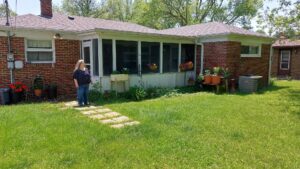
Blindness doesn’t disorient me. Migraine does. A migraine can cause me to sense that I am turned in the opposite direction, feel dizzy, or sense that my body is upside down. In order to give me a general sense of space in case of migraine-induced disorientation, I chose to include a specific number of step-stones leading out from the planters at the east side of the sunroom. At the time of this writing, I am able to see them and I also rely on their texture. Some of them are located on parts of the ground that are not level, and I have memorized the pattern of their slant.
Web sites emphasize the importance of level ground for the safety of blind people. There is nothing inherently dangerous about elevation changes for me as a blind person. The changes in the ground are important landmarks.
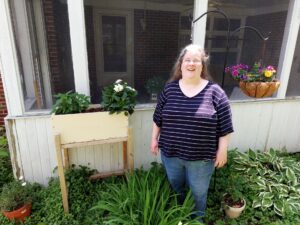
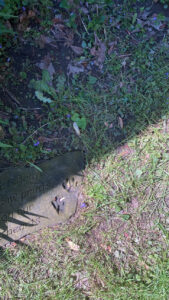
I have a single stone placed at a place in my garden that is emotionally significant to me. As I navigate through the area, I am guaranteed to step on it. I walk on the step-stones, away from the planters under the kitchen windows. When I reach the third stone, I turn left and step in the grass. My first raised bed is on my immediate left, and I always stop to check on the plants in it. Past this raised bed is a clump of day lillies, and past these is my stone. It has a paw print on it and the words, “Cats leave paw prints on our hearts.” This stone is placed in the garden in memory of Inca, who was my companion for 17 years.
If I stand on this stone and face the sunroom, I can clink my wind chimes and also check on a hanging basket with petunias and marigolds in it. Below the basket is a pot with a columbine in it.
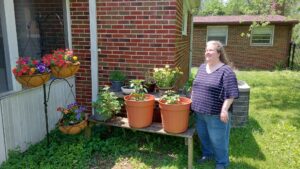
Farther along, past the memory stone, hostas are growing near the house. They never need my care and there is a rock pile in front of them. Past the rock pile is a raised bed with verbina, petunias, and marigolds.


Past this are more hanging baskets with petunias, marigolds and pansies (and more chimes because I personally enjoy them), and against the house wall is the picnic table with various pots on the table and bench. With my back to these pots, I walk a straight line back to the stones that lead to the right back to the planters, where I then turn right to go into the sunroom.
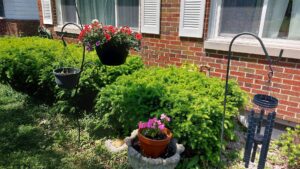
I also have a few pots in front of my house. There is a lot of landscaping here, and I didn”>
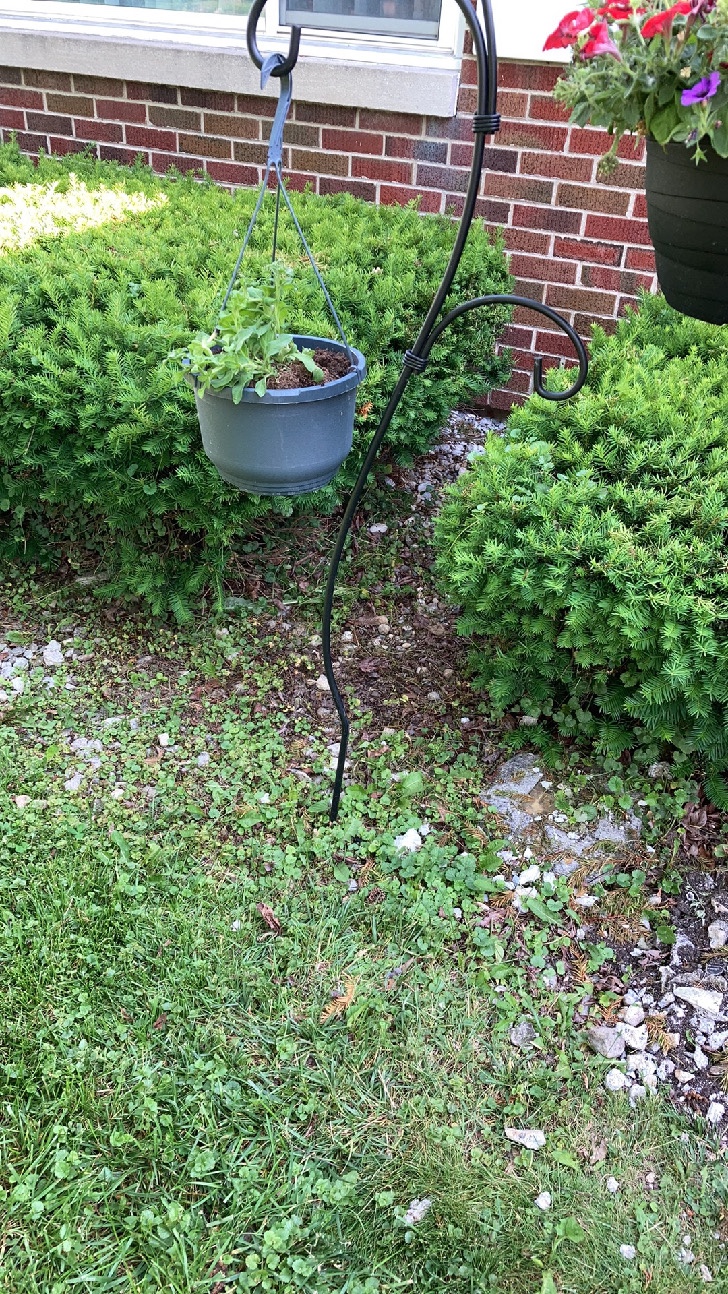
- Learning From My Younger Self - February 10, 2024
- more reflections on ITD - June 30, 2023
- On travel while at ITD: reflections after day 1 - June 27, 2023
- ITD day 1 - June 27, 2023
- ITD day 1 - June 27, 2023
- Job Descriptions, Inclusivity, and Equity for People with Disabilities - October 15, 2022
- Traveling without a Guide Dog: Experience with Cane and Walker - October 14, 2022
- Disability and Church, Intersection - June 11, 2022
- Review: When Chronic Pain and Illness Take Everything Away - June 11, 2022
- Grammar and Style Resources for Writers - June 9, 2022